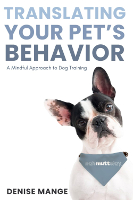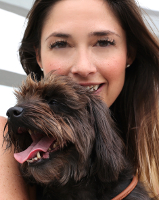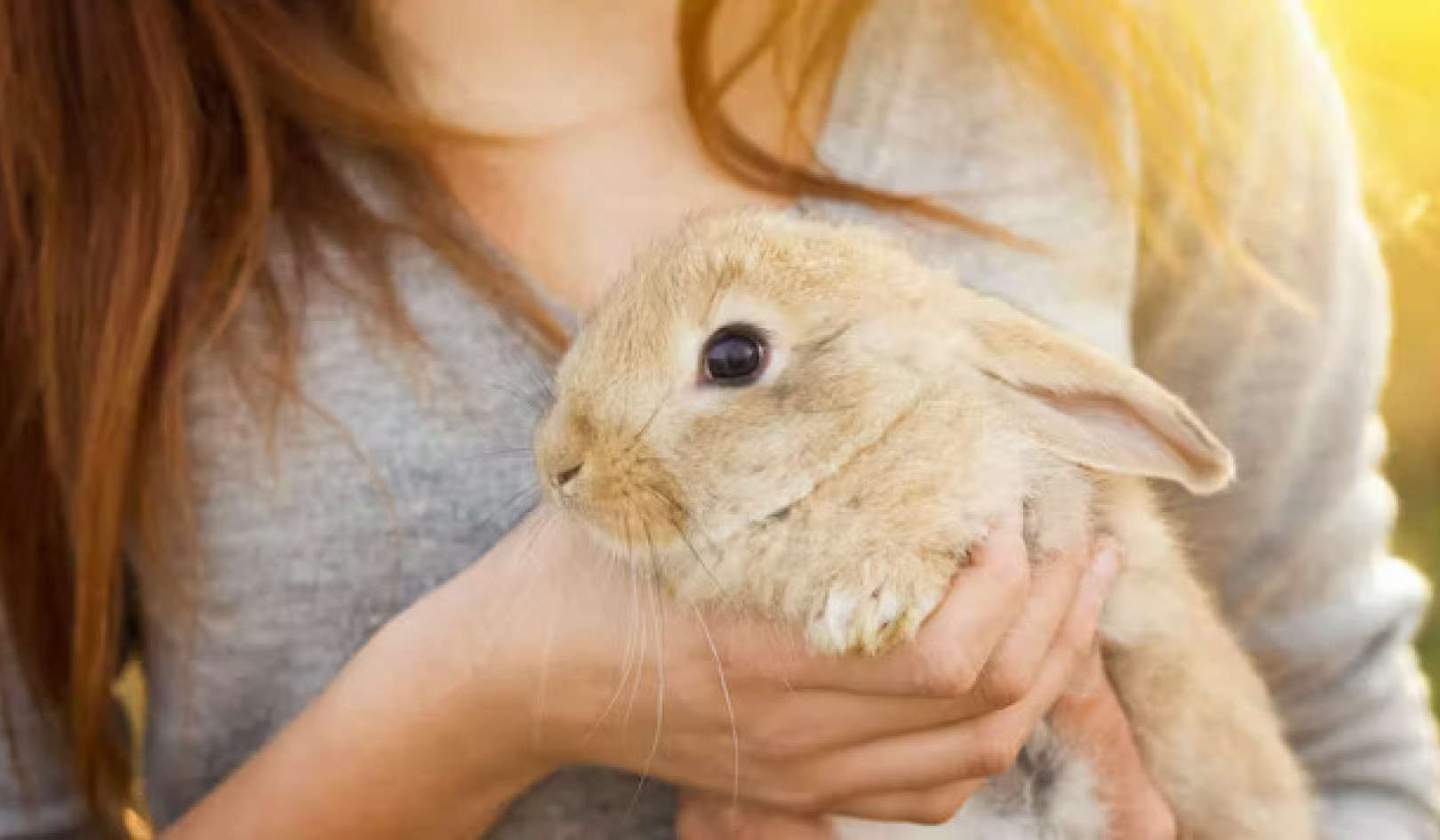
Image by Andrés Carlo
In This Article:
- Effective strategies to manage barking, jumping, and nipping.
- Reducing unwanted behaviors with physical and mental stimulation.
- Understand the importance of consistency in training your dog.
- Explore techniques for redirecting and desensitizing your dog to specific triggers.
- Find out how to stay patient and positive during challenging training moments.
Tips to Manage your Dog's Unwanted Behavior
by Denise Mange.
Managing unwanted behaviors calls you to take responsibility for the role you play in your pet’s life, and also in your own. If you are avoiding a calling, a task, or looking at a broader energetic pattern in your life, your animal companion may call you on it through disruptive patterns.
Behaviors you might not love—like barking, jumping, digging, chewing, and nipping—come naturally to dogs. However, they might not be appropriate within your pack. In those cases, ensure your pet is getting enough stimulation and leverage the principles of positive reinforcement to communicate to your dog what is acceptable and what is not.
Providing Sufficient Physical & Mental Exercise
To effectively manage unwanted behaviors, it's crucial to understand their root cause. Often, these behaviors arise from boredom or escalating frustration. Therefore, ensuring your pup receives ample physical exercise and mental stimulation is essential.
Engaging interactive toys and practicing commands are valuable tools in keeping your pup's mind occupied. You may even consider enlisting a dog walker to take your furry friend on an adventure while you're away, which can help curb unwanted behaviors.
Interrupting Behaviors
To interrupt barking, you can create a moment of silence by clapping or using a squeaky toy to interrupt your pup gently. Once your pup stops barking, calmly acknowledge the silence with a "YES" and redirect their energy into more suitable activities using active commands. Providing appropriate toys or activities can help channel their excess energy constructively.
Managing Jumping
Jumping is another common behavior that can be managed effectively through consistent techniques. Refrain from giving your pup attention, eye contact, or engagement when they jump.
Instead, cross your arms and turn away, ensuring they understand that jumping leads to losing your attention. Calmly and confidently praise and reward them only when all four paws are on the ground, encouraging more appropriate behavior.
Nipping
Pups explore the world through their mouths, and nipping is common, especially during teething. Provide appropriate teething items like bully sticks, teething rings, or chilled washcloths to soothe their discomfort.
When they nip during play, respond with a sharp "ouch" to interrupt them, then briefly stop engaging with them and withdraw attention. When your pup has calmed down, offer a toy to redirect their behavior and praise them when they make better choices.
Chewing
Interrupt and redirect your pup, offering them a better outlet for their excess energy, like a toy or a walk for fresh air. Additionally, do desensitization work and safeguard valuable items and wires to prevent destructive chewing.
Remember, managing unwanted behaviors is about building trust and guiding your pup to make better choices. Consistency, understanding their motivations, and positive reinforcement are key to successful training. With patience and dedication, your pup will learn more constructive ways to interact with their environment and you.
Troubleshooting
Understanding the Basis for Barking.
Barking can be of various types, including territorial, alert, anxious, defensive, attention-seeking, frustration, and play barking. To manage territorial, defensive, or anxious barking, focus on building your pup’s confidence. Providing them with a safe space, such as a crate or a gated area, can be helpful.
If the barking is frustration-based rooted in seeking attention, ignoring your furry friend until there is a moment of quiet is a better strategy. Always remember to funnel excess energy into a more productive pursuit.
Praising Good Choices.
Consistent feedback and encouragement are vital during training. Always acknowledge and calmly praise your pup whenever they make good choices or display desirable behaviors. This positive reinforcement solidifies their understanding of what is acceptable.
It’s just as crucial to avoid reinforcing unwanted behaviors inadvertently. Refrain from making eye contact and turn away when your pup displays undesirable actions.
Consistency, Consistency, Consistency.
Maintaining consistency is paramount for successful behavior management. Ensure that everyone in the household follows the same rules and guidelines during training. Avoid exceptions, as it may confuse your pup and hinder progress.
Desensitization.
If your pup exhibits undesirable behaviors around specific triggers, like their leash coming out before a walk, desensitization can be helpful. Gradually expose them to these items in short spurts throughout the day, offering high-value treats when acting appropriately to create positive associations and help them remain calm and collected.
Additional Considerations
Frustration.
When managing unwanted behaviors, it is common to feel frustrated. Remember that your pup is inviting you to step into your own power more fully, and that begins with reaffirming how you feel about these behaviors. Rather than associating and imbuing them with the energy of frustration and helplessness, reaffirm that you have the ability, skills, and determination to create a shift and visualize what you want to see take its place. That way, you are projecting to your furry friend the better choices you are asking for from a place of that energetic resonance rather than from a place of frustration and what is not working.
As you try to redirect your pup, frustration can seep in, creating frenetic energy around the situation that your pets picks up on and matches. Modeling the calmer energy you want to see from your pet can be the strongest catalyst for change.
Putting Out Fires vs. Empowering Transformation.
As pet parents, especially if we have multiple members in our pack, we often spend our time and energy putting out fires or focusing on the pet who isn’t complying. We manage unwanted behaviors rather than proactively create change by empowering our loved ones and pets to transform.
Rather than being in the mindset of correcting or constantly putting out fires, we can focus our time and energy on rewarding those that are actively complying while proactively setting up training, establishing protocols for success, and determining ways to properly connect so the entire pack feels more empowered.
This means less time and energy goes toward managing issues, and more is spent on what brings you joy, whether it’s an artistic endeavor, a creative pursuit, or simply opportunities to spend more enjoyable time together.
Catastrophizing.
Sometimes, despite all our training efforts and focus on our energetic connection, our pets have a "bad day." They consistently miss the wee wee pad, act out, are extra nippy, or have a particularly reactive moment during a walk.
It's easy to feel discouraged, frustrated, or like a failure in those instances. We catastrophize, extrapolating that this is how things are going to be from here on out. But sometimes, our pets have the equivalent of a grumpy day, emotional outburst, or panic attack. And this is normal.
Our pups go through moods just like us. This means we might have a perfect day with our pups followed by a very challenging one, making it easy to feel all training has been lost. These setbacks are temporary and will pass as long as we stay consistent with training.
And just as important as it is to manage our energy during the challenging times, we want to make a point of celebrating the victories. We can't control everything, but we can empower ourselves by perceiving each moment as a clean slate.
Copyright 2024. All Rights Reserved.
Adapted with permission.
Article Source:
BOOK: Translating Your Pet's Behavior
Translating Your Pet's Behavior: A Mindful Approach to Dog Training
by Denise Mange. After working with hundreds of clients, certified dog trainer and animal communicator Denise Mange developed a proven methodology revealing the ways our actions, beliefs, and patterns affect our pets to help you create lasting change and powerful transformation not only in your dog’s behavior but in your own life as well.
After working with hundreds of clients, certified dog trainer and animal communicator Denise Mange developed a proven methodology revealing the ways our actions, beliefs, and patterns affect our pets to help you create lasting change and powerful transformation not only in your dog’s behavior but in your own life as well.
This comprehensive resource is perfect for puppy training, helping rescue dogs adapt to a new home, providing comfort for senior pets, or simply engaging long-time companions in new ways.
For more info and/or to order this book, click here. Also available as a Kindle edition.
About the Author
 Denise Mange is a certified dog trainer, animal communicator, pet numerologist, and founder of Pet Prana®. Her mindful approach to pet training combines traditional training with energetic considerations of pet guardianship. She has been featured in publications and media outlets worldwide, cementing her reputation as a pioneer in the field of mindful pet training. Her new book, Translating Your Pet’s Behavior: Learn What Their Behavior Says About You to Train Smarter, Not Harder, is a #1 bestseller in its category on Amazon. Learn more at PetPrana.com.
Denise Mange is a certified dog trainer, animal communicator, pet numerologist, and founder of Pet Prana®. Her mindful approach to pet training combines traditional training with energetic considerations of pet guardianship. She has been featured in publications and media outlets worldwide, cementing her reputation as a pioneer in the field of mindful pet training. Her new book, Translating Your Pet’s Behavior: Learn What Their Behavior Says About You to Train Smarter, Not Harder, is a #1 bestseller in its category on Amazon. Learn more at PetPrana.com.
Article Recap:
This article offers comprehensive strategies for managing your dog’s unwanted behaviors, such as barking, jumping, and nipping. It emphasizes the importance of understanding the root causes of these behaviors, such as boredom or frustration, and provides practical tips for using positive reinforcement to guide your dog toward more appropriate actions. Consistency, patience, and proactive training are highlighted as key factors in creating a happier, more well-behaved pet.

























